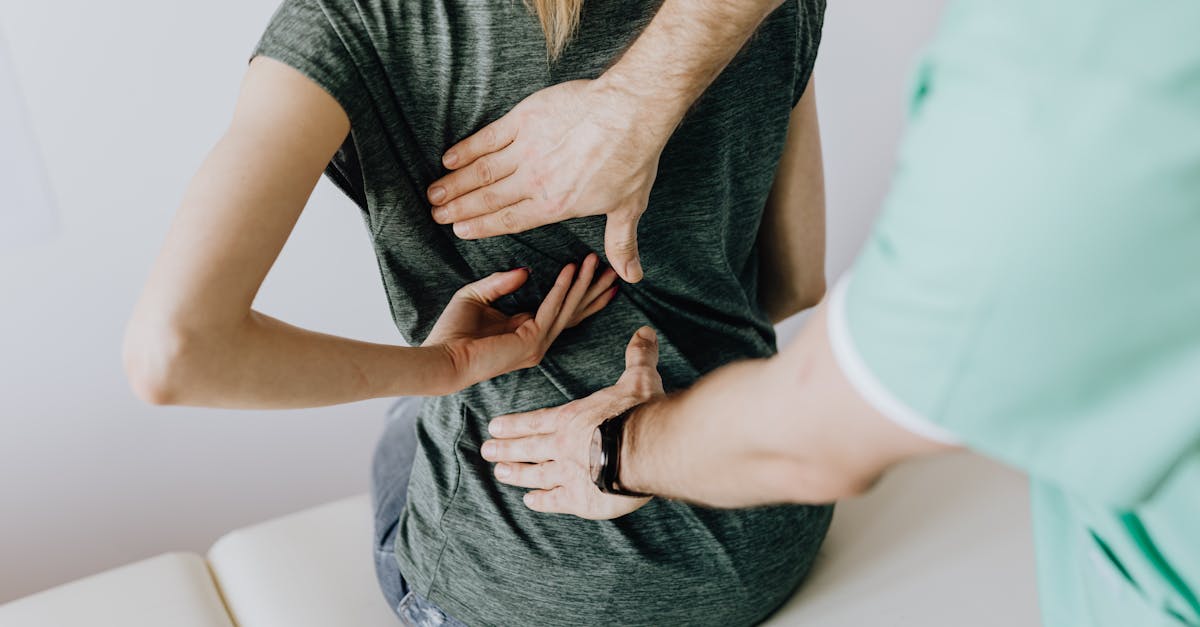Lower Back Pain: Common Causes

Table Of Contents
Repetitive Movements
Repetitive movements are a major contributing factor to lower back pain for many individuals. Everyday activities such as bending, lifting, and twisting can strain the lower back muscles over time. When these movements are repeated frequently without proper rest or recovery, it can lead to muscle fatigue and ultimately result in discomfort and pain in the lower back area.
Additionally, certain occupations that involve repetitive motions, such as those performed in construction, manufacturing, or healthcare settings, can put individuals at a higher risk for developing lower back pain. The constant stress and strain on the lower back muscles from performing the same movements day in and day out can eventually lead to muscle imbalances, inflammation, and ultimately pain. It is important for individuals in these professions to be mindful of their posture, technique, and take regular breaks to prevent overuse injuries and lower back pain.
Overuse of Lower Back Muscles
Overuse of lower back muscles is a common cause of pain that many individuals experience. When these muscles are repeatedly engaged beyond their capacity, it can lead to strain and discomfort. Activities that involve heavy lifting, repetitive bending, or prolonged sitting can put excessive stress on the lower back muscles, causing them to become overworked and fatigued.
In addition to physical activities, poor posture can also contribute to the overuse of lower back muscles. Slouching or hunching over for prolonged periods can misalign the spine and put undue pressure on the muscles in the lower back. It is essential to be mindful of posture habits and take frequent breaks to stretch and move around, especially if you have a sedentary job or lifestyle.
Aging
As we age, our bodies undergo various changes, including alterations in the structures of the spine. One of the most common issues associated with aging is the degeneration of spinal structures, such as the discs and vertebrae. Over time, these structures can wear down, leading to reduced flexibility and an increased risk of lower back pain.
Additionally, aging can contribute to a decrease in muscle mass and strength, which can affect the support provided to the lower back. As muscles weaken with age, they may become less efficient at supporting the spine and maintaining proper alignment. This lack of support can result in increased stress on the lower back muscles and surrounding tissues, potentially leading to discomfort and pain.
Degeneration of Spinal Structures
Degeneration of spinal structures is a common cause of lower back pain, especially as individuals age. The spinal discs, which act as cushions between the vertebrae, can wear down over time, leading to discomfort and stiffness in the lower back. This degeneration can result in decreased flexibility and limited range of motion, making everyday activities more challenging.
The breakdown of spinal structures can also lead to conditions such as herniated discs or spinal stenosis, which further contribute to lower back pain. As the discs degenerate, they may bulge or rupture, putting pressure on nearby nerves and causing sharp, shooting pains down the legs. Additionally, the narrowing of the spinal canal in cases of spinal stenosis can lead to numbness, tingling, and weakness in the lower back and legs.
Poor Flexibility
Poor flexibility is a common factor contributing to lower back pain. When muscles and ligaments are tight and inflexible, it can lead to imbalances in the body, causing strain on the lower back. Limited flexibility can also affect the range of motion in the spine, making it difficult to move freely and properly support the back during activities.
Moreover, poor flexibility can increase the risk of injury during physical activities. When the muscles are not able to stretch and move as they should, the body compensates by putting more strain on the lower back, leading to potential pain and discomfort. Stretching exercises and regular physical activity can help improve flexibility and reduce the likelihood of experiencing lower back pain due to this factor.
Limited Range of Motion
Limited range of motion in the lower back can be a contributing factor to the development of lower back pain. When the spine is unable to move through its full range of motion, it can lead to stiffness and discomfort in the lower back region. This restriction in movement can be caused by factors such as muscle tightness, joint stiffness, or poor flexibility in the surrounding structures.
Engaging in regular stretching exercises that target the muscles and joints in the lower back can help improve flexibility and increase the range of motion. By incorporating a combination of stretching and strengthening exercises into your daily routine, you can enhance the mobility of your lower back and potentially reduce the risk of experiencing pain and discomfort associated with limited range of motion.
FAQS
What are some common causes of lower back pain?
Common causes of lower back pain include repetitive movements, overuse of lower back muscles, aging, degeneration of spinal structures, poor flexibility, and limited range of motion.
Can repetitive movements lead to lower back pain?
Yes, repetitive movements such as lifting heavy objects, bending over frequently, or sitting for extended periods can strain the lower back muscles and lead to pain.
How does aging contribute to lower back pain?
As we age, the spinal structures may degenerate, leading to conditions such as herniated discs or spinal stenosis, which can result in lower back pain.
Why is poor flexibility a common cause of lower back pain?
Poor flexibility can cause imbalances in muscle strength and coordination, putting additional strain on the lower back muscles and leading to pain.
What role does limited range of motion play in lower back pain?
Limited range of motion can restrict the movement of the spine and surrounding muscles, increasing the likelihood of muscle imbalances and lower back pain.
Related Links
Middle Back Pain: Common Causesback pain